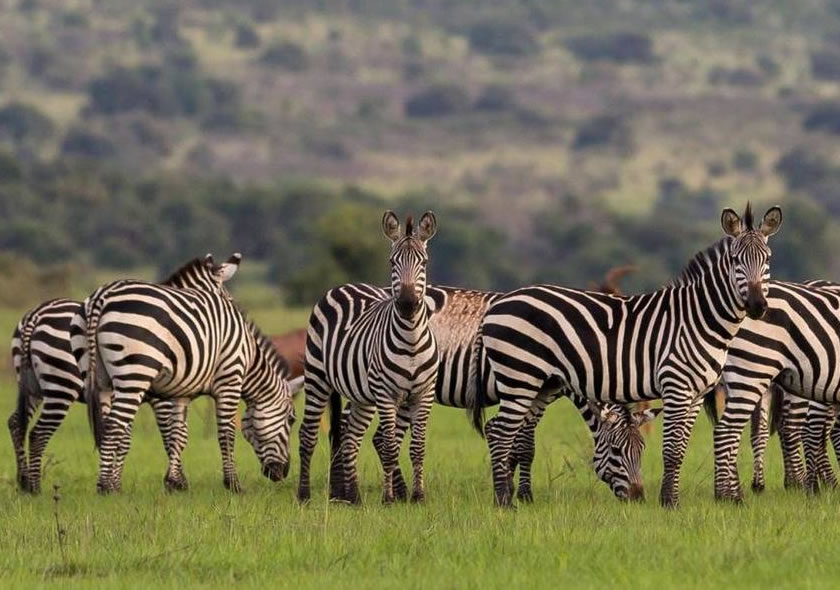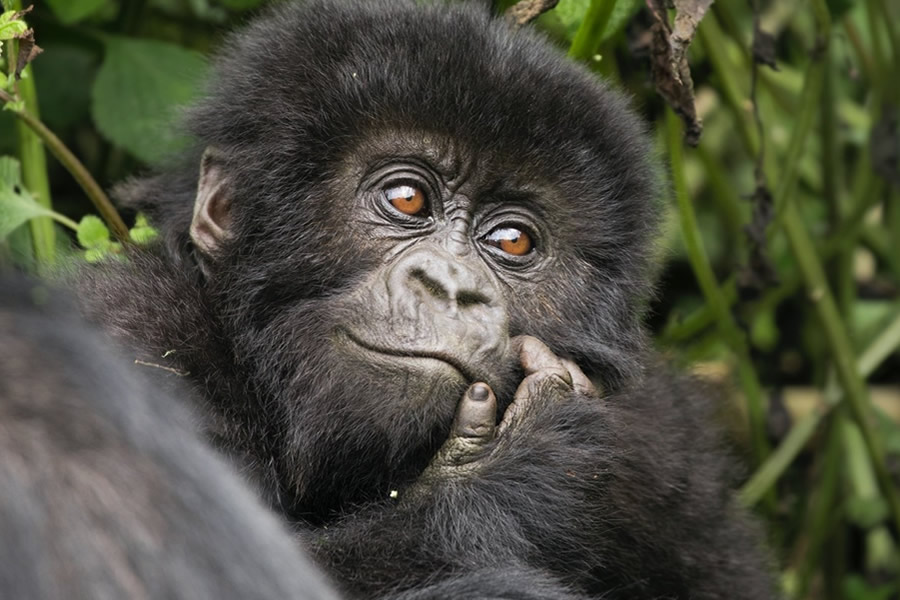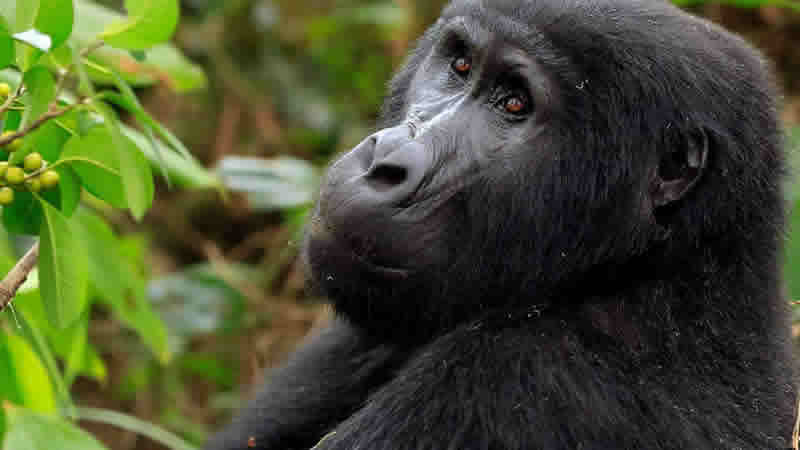What is the cost of Uganda Safari 2025
What is the cost of Uganda Safari 2025, Are you contemplating a safari in Uganda and want information regarding the costs of a Uganda safari in 2025? The expense of a Uganda safari can fluctuate significantly based on various aspects, including the safari’s duration, hotel quality, included activities, seasonal timing, and the selected tour operator.
A mid-range safari package in Uganda typically ranges from $1,500 to $3,000 per person for a regular duration of 3 to 7 days. This often encompasses lodging, meals, transportation inside Uganda, park fees, and guided excursions including game drives, gorilla trekking, chimpanzee tracking, and boat cruises.
Luxury safaris featuring upscale hotels and special experiences can cost between $3,000 and $10,000 or more per individual. These packages may encompass exclusive accommodations, customized itineraries, and supplementary amenities.

A safari in Uganda provides a variety of activities and experiences, appealing to nature aficionados, adventure seekers, and animal fans. Here are few premier activities to engage in while a safari in Uganda:
Gorilla Trekking: Uganda is distinguished for its population of mountain gorillas. Bwindi Impenetrable National Park and Mgahinga Gorilla National Park provide exceptional possibilities for trekking through deep woods and observing these magnificent creatures in their native environment.
Kibale Forest National Park is among the premier locations globally for chimpanzee tracking. Guided excursions lead you across the forest to closely view habituated chimpanzee troops.
Game Drives: Discover Uganda’s savannah national parks, including Queen Elizabeth National Park, Murchison Falls National Park, and Kidepo Valley National Park, during exhilarating game drives. Observe renowned African fauna like elephants, lions, leopards, giraffes, buffalo, and several antelope species.
Boat Safaris: Embark on a boat trip along the Nile River in Murchison Falls National Park or the Kazinga Channel in Queen Elizabeth National Park. These cruises provide exceptional possibilities for avian observation and the viewing of hippos, crocodiles, and various other animals along the riverbanks.
Nature Walks: Participate in guided nature walks or forest treks in Uganda’s national parks to investigate varied ecosystems, identify uncommon plant species, and observe smaller creatures, including monkeys, birds, and butterflies.
Birdwatching: Uganda is an avian paradise, featuring over 1,000 bird species, including several endemics and migratory varieties. Renowned avian observation locales comprise Bwindi Impenetrable National Park, Queen Elizabeth National Park, and Semuliki National Park.
Cultural Engagement: Interact with local people and explore Uganda’s extensive cultural legacy via cultural tours, rural excursions, and traditional performances. Investigate conventional homesteads, engage in cultural rituals, and converse with local craftsmen.
Hiking and Mountaineering: Uganda presents adventure seekers with chances for hiking and mountaineering, including treks to the snow-capped summits of the Rwenzori Mountains and ascents of Mount Elgon, an extinct volcano featuring breathtaking crater lakes and expansive vistas.
Hot Air Balloon Safaris: Discover the African bush from a distinctive vantage point with a hot air balloon safari across the savannah plains of Queen Elizabeth National Park or the scenic vistas of Murchison Falls National Park.
Indulgence and Opulence: Rejuvenate and indulge in luxurious hotels and safari camps situated within Uganda’s breathtaking natural landscapes. Indulge in spa therapies, exquisite cuisine, and stunning vistas while attaining the pinnacle of luxury and tranquility.
These are but a selection of the numerous activities and experiences offered on a Uganda safari. Uganda has many opportunities for adventure, wildlife encounters, cultural immersion, and relaxation, catering to all traveler’s preferences.

Uganda boasts an array of national parks, each providing distinct wildlife encounters and breathtaking natural scenery. Below are few important parks to explore in Uganda:
Bwindi Impenetrable National Park, renowned for its population of endangered mountain gorillas, is a UNESCO World Heritage Site and one of the premier destinations globally for gorilla trekking. It also hosts a variety of avian species and other primates.
Queen Elizabeth National Park: This vast park is situated in western Uganda and is renowned for its varied habitats, encompassing savannah grasslands, marshes, and deep forests. Guests may partake in game drives to observe lions, elephants, buffalo, and various other species, in addition to boat rides along the Kazinga Channel.
Murchison Falls National Park: Named for the striking Murchison Falls, where the Nile River constricts through a small valley, this park provides exceptional wildlife viewing chances. Visitors can observe substantial herds of elephants, giraffes, hippos, and crocodiles, in addition to hiking to the summit of the falls for stunning vistas.
Kibale Forest National Park: Renowned as the primate capital of the world, Kibale Forest is distinguished for its chimpanzee population. Visitors may engage in chimpanzee tracking or participate in guided forest treks to observe other primates, including red colobus monkeys and L’Hoest’s monkeys.
Mgahinga Gorilla National Park: Situated in the Virunga Mountains, Mgahinga is an excellent location for gorilla trekking. It is also inhabited by golden monkeys and has picturesque hiking trails, including the chance to ascend to the summit of Mount Sabyinyo.
Semuliki National Park: This compact park features lowland tropical rainforest and is renowned for its distinctive avifauna, geothermal springs, and varied flora and fauna. Visitors may partake in avian observation, guided ecological excursions, and cultural interactions with the indigenous Batwa population.
Kidepo Valley National Park: Kidepo Valley, situated in the isolated northeast region of Uganda, is distinguished for its steep terrain, varied fauna, and genuine wilderness experience. Visitors can observe lions, cheetahs, elephants, and several species of antelope amidst breathtaking landscapes.
The cost of a Uganda safari in 2025. These represent a selection of the principal national parks to explore in Uganda, each providing unique sights and experiences. Uganda’s national parks cater to all travelers, including gorilla trekking, animal viewing, birdwatching, and cultural experiences.

The optimal time to visit Uganda primarily hinges on your interests and the activities you intend to do. Uganda predominantly experiences a tropical climate characterized by two principal seasons: a dry season and a wet season. Below is an analysis of the optimal times to visit, categorized by season and prevalent activities:
The dry season, occurring from June to August and December to February, is typically regarded as the optimal period for wildlife observation and gorilla trekking in Uganda.
The climate is arid and agreeable, facilitating navigation through national parks and participation in outdoor pursuits.
Fauna gathers around aquatic sources, facilitating their observation during game drives and boat safaris.
During this period, gorilla trekking trails exhibit reduced muck and slipperiness, hence providing improved trekking conditions.
Shoulder Seasons (March to May, September to November):
These months occur between the dry and wet seasons and are marked by sporadic rainfall.
Although wildlife observation remains favorable, certain regions may provide difficulties in accessibility due to poor road conditions.
This period is characterized by reduced tourist activity, resulting in diminished crowds and the possibility of lower prices for lodging and excursions.
Birdwatching is superb during these months as migratory avian species arrive in Uganda.
The wet season in Uganda occurs from March to May and September to November, characterized by significant rainfall, especially from March to May.

Although rain may render certain roads unusable and hiking paths muddy, it simultaneously fosters verdant landscapes and picturesque views.
Gorilla trekking and additional activities remain feasible during the wet season; however, trekking conditions may prove more arduous.
The rainy season presents an excellent opportunity for birdwatching, since numerous avian species are engaged in breeding and nesting activities.
What is the cost of a Uganda safari in 2025? The optimal time to visit Uganda is contingent upon your choices and priorities. The optimal conditions for gorilla trekking and wildlife observation occur throughout the dry season, specifically from June to August and December to February. Nonetheless, if you seek reduced rates, diminished crowds, and verdant scenery, contemplate going during the shoulder or rainy seasons.



